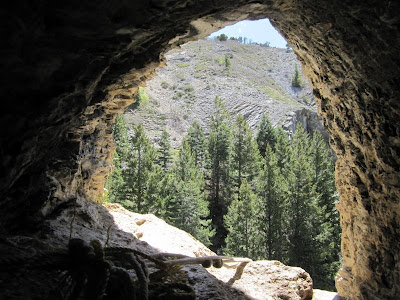What is white-nose syndrome?
Hibernating bats in the northeastern United States are dying in record numbers, and we do not know the cause of the deaths. This wildlife health crisis, white-nose syndrome, is named for the white fungus evident on the muzzles and wings of affected bats.How is WNS transmitted?
The U.S. Fish & Wildlife Service believes that WNS is transmitted primarily from bat to bat. There is a strong possibility that it may also be transmitted by humans inadvertently carrying the causative agent from cave to cave on their clothing and gear.
What should cavers know and do?
The Service and the states request that cavers observe all cave closures and advisories and avoid caves, mines or passages containing hibernating bats to minimize disturbance to the bats. The Service asks that cavers and cave visitors stay out of all caves in the affected states and adjoining states to help slow the potential spread of WNS.
It is also advise that you decontaminate previously used gear immediately, store them away, and thoroughly wash and decontaminate any surfaces with which these items may have come into contact (e.g., car trunk, duffle bag, etc.). Currently, 10% bleach solution, Lysol® All-purpose Professional Cleaner, and the antibacterial form of Formula 409® have been demonstrated to be effective at killing Geomyces sp., the fungus associated with WNS, on nonporous surfaces.
For a complete list of decontamination procedures for cavers click here.
For more information, see http://www.fws.gov/northeast/white_nose.html.
Federal Relay Service for the deaf and hard-of-hearing
1 800/877 8339
U.S. Fish & Wildlife Service
1 800/344 WILD
www.fws.gov
WhiteNoseBats@fws.gov
(The above information is taken from the U.S. Fish & Wildlife Service White-nose syndrome in bats Frequently Asked Questions publication available here)



















































 As you can see by the photos these caves are mostly tight passages. To enter Interstate Cave requires a permit as well as about 300' of rope as it requires a rappel to enter the cave and to descend to the lower passages. Entrance to this cave is highly discouraged as there are delicate gypsum formations in it's tight passages.
As you can see by the photos these caves are mostly tight passages. To enter Interstate Cave requires a permit as well as about 300' of rope as it requires a rappel to enter the cave and to descend to the lower passages. Entrance to this cave is highly discouraged as there are delicate gypsum formations in it's tight passages. 










